Net ropes play a crucial role in determining the strength, tension, and longevity of fishing net systems. However, among the three most common materials today — PE, Nylon, and PP, which one offers the best performance for fishermen and vessel owners? Each material has its own advantages and limitations in terms of tensile strength, abrasion resistance, and cost, all directly influencing fishing efficiency. This article provides an in-depth comparison of PE, Nylon, and PP net ropes, from durability and buoyancy to real-world applications, helping you choose the most durable and suitable net rope for different fishing conditions.
1. What Are Net Ropes? Their Role in Fisheries and Fishing Nets
Net ropes are specialized ropes used to reinforce and secure the edges of fishing nets, helping maintain the net’s shape and stability during casting, hauling, or retrieval. They are a vital component that ensures the durability, tension, and efficiency of the entire net system.
- Net ropes are commonly made from synthetic fibers such as Polyethylene (PE), Nylon (PA), or Polypropylene (PP).
- Depending on the fishing method, users can select ropes that float, sink, or offer high abrasion resistance.
- The rope’s braiding structure and diameter also affect its load-bearing capacity and flexibility during operations.
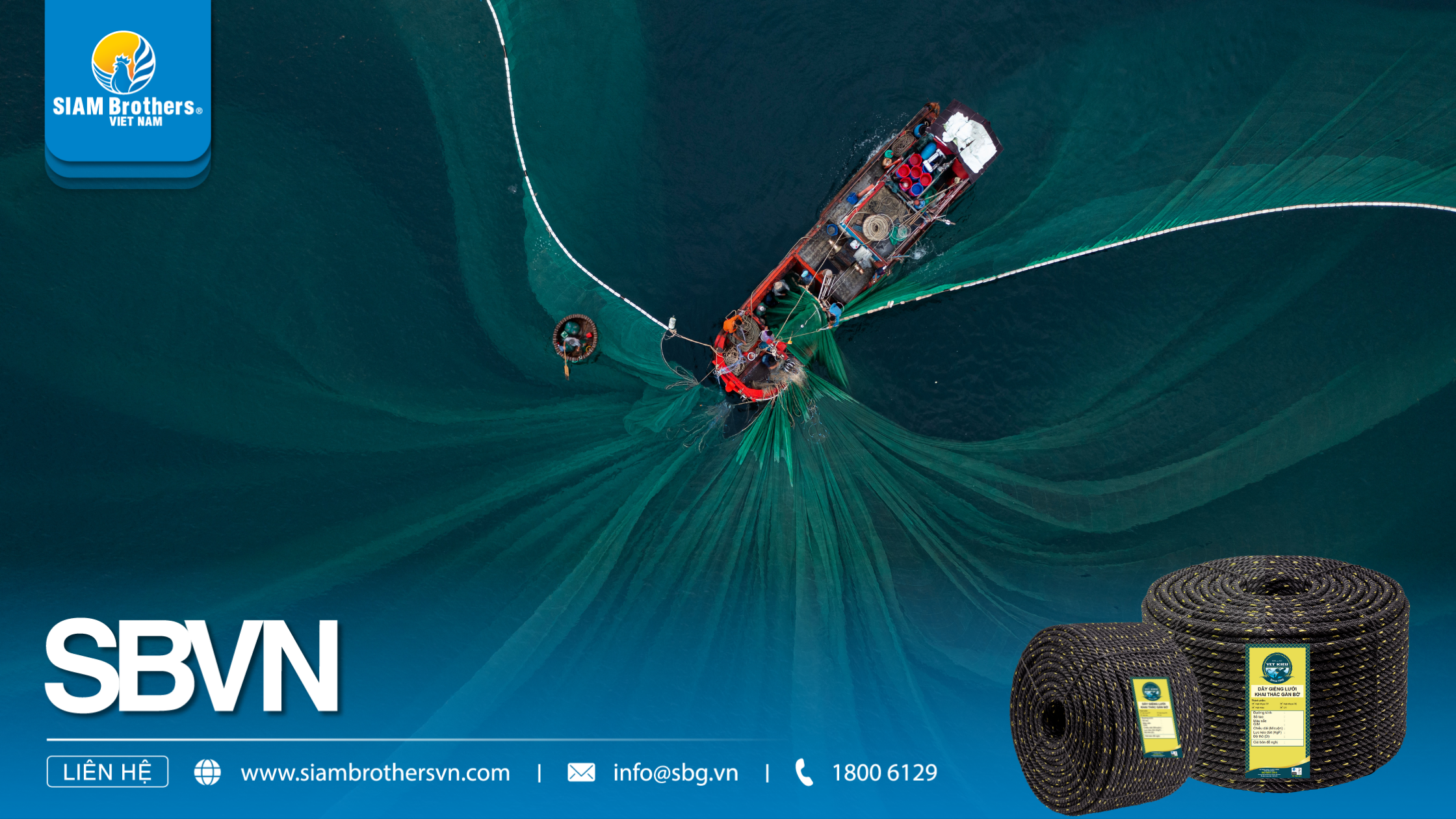
1.1. The Importance of Net Ropes in Fisheries
In the fishing industry, net ropes are not merely supporting components — they are essential to the net’s overall performance:
- Maintaining net shape and stability: Prevents deformation caused by strong water currents or heavy hauling.
- Enhancing overall durability: Resists physical and environmental impacts such as friction, UV rays, and saltwater, extending the lifespan of the net.
- Optimizing fishing efficiency: Properly designed net ropes allow the net to spread evenly, reducing product loss during operation.
- Ensuring safety for fishermen: High-quality ropes prevent tearing or imbalance during hauling, minimizing operational risks.
1.2. Why Choosing the Right Net Rope Material Matters
Selecting the appropriate net rope material — PE, Nylon, or PP — directly impacts fishing efficiency and operational cost.
- PP ropes offer high buoyancy and cost efficiency.
- Nylon ropes provide flexibility and elasticity, ideal for deep-sea or bottom nets.
- PE ropes deliver outstanding durability and abrasion resistance, suitable for heavy-duty and offshore use.
Understanding these characteristics helps fishermen make informed decisions that reduce maintenance costs while maximizing performance and longevity.
2. Overview of the Three Most Common Materials Used for Net Ropes
2.1. Polyethylene (PE) – High Strength and Excellent Abrasion Resistance
PE net ropes are the most popular in modern fisheries, known for their tensile strength, UV resistance, and durability in saltwater.
- Lightweight and easy to handle, ideal for floating or upper net sections.
- Resistant to water and chemical absorption, maintaining strength over time.
- Minimal stretch, helping nets retain consistent shape during operation.
- Slightly less flexible than Nylon, requiring proper knotting or splicing techniques for optimal performance.
2.2. Nylon (PA) – Flexible, Elastic, Ideal for Sinking Nets
Nylon net ropes are valued for their softness, flexibility, and elasticity, making them perfect for fishing in turbulent waters or when handling large catches.
- Excellent shock absorption, reducing breakage risk during hauling.
- Naturally dense, suitable for bottom or sinking net ropes.
- Smooth surface minimizes friction between the rope and net, extending service life.
- Prone to water absorption and reduced strength under prolonged sun exposure — proper maintenance is recommended.
2.3. Polypropylene (PP) – Lightweight, Buoyant, and Cost-Effective
PP net ropes are popular for their buoyancy, affordability, and resistance to mold and moisture, making them a practical choice for budget-conscious fishermen.
- The lightest of all three materials, easy to handle and transport.
- Resistant to chemicals and oils, adaptable to various fishing environments.
- Colorfast and easy to identify during operations.
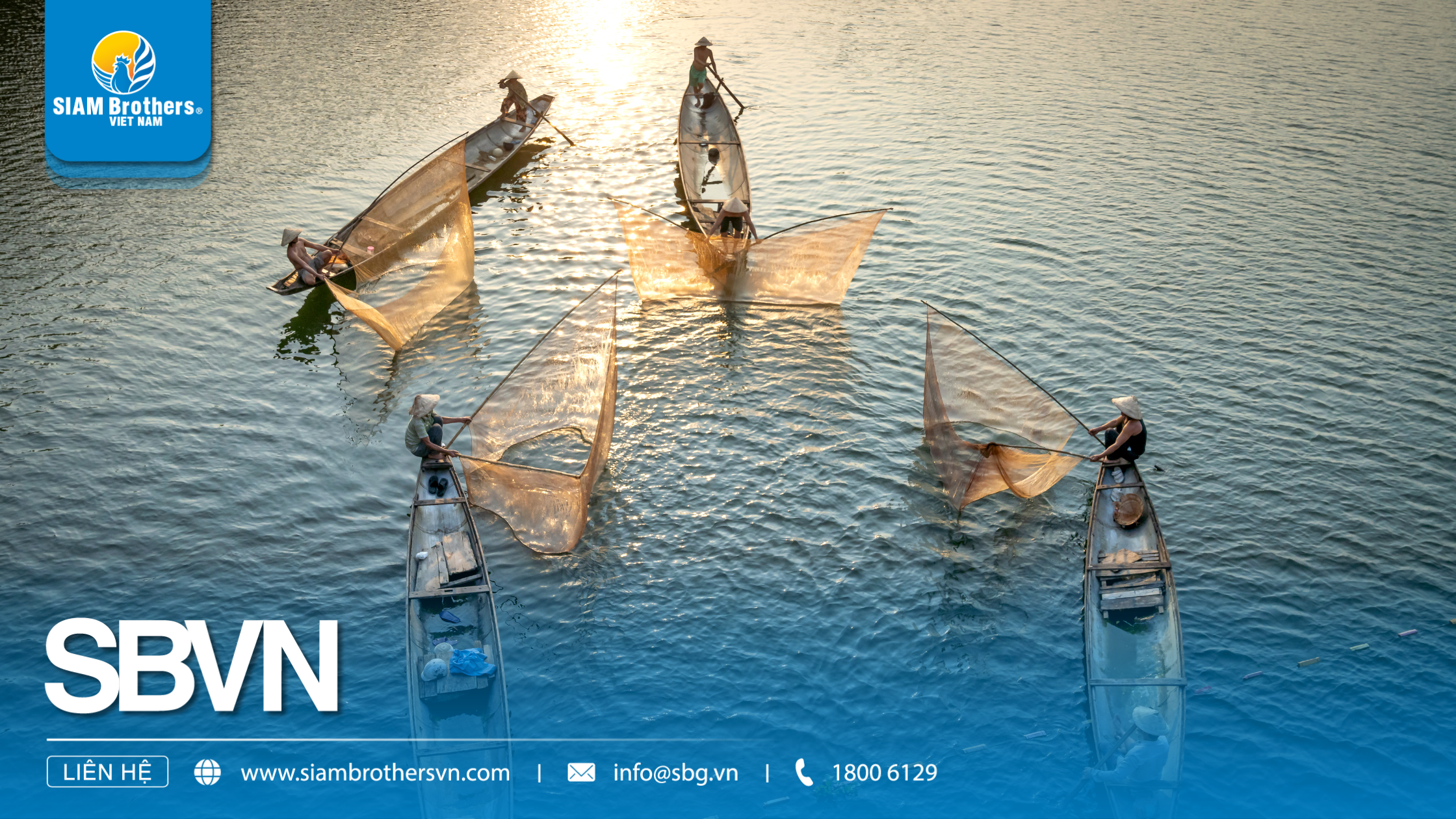
3. Detailed Comparison Table: How Do PE, Nylon, and PP Net Ropes Differ?
3.1 Detailed Comparison Between PE – Nylon – PP
| Criteria |
PE (Polyethylene) |
Nylon (Polyamide) |
PP (Polypropylene) |
| Tensile Strength & Abrasion Resistance |
Very high; excellent resistance to friction and UV rays |
High; flexible and absorbs pulling force well |
Moderate; wears faster with long-term use |
| Buoyancy |
Floats |
Slightly sinks |
Clearly floats |
| Elasticity |
Low, minimal stretch |
High, flexible |
Moderate |
| UV & Saltwater Resistance |
Excellent; highly resistant to aging |
Average; strength decreases under sunlight |
Good, but less durable than PE |
| Weight |
Light |
Heavier than PE and PP |
Lightest |
| Price |
Medium to high |
Higher due to elasticity |
Lowest, cost-effective |
| Average Lifespan |
Long, durable in harsh marine environments |
Medium to long with proper maintenance |
Shorter, suitable for temporary gear |
| Common Applications |
Floating ropes, offshore nets, anchoring lines |
Sinking ropes, bottom nets, large fish capture |
Nearshore floating nets, light fishing gear, low-cost setups |
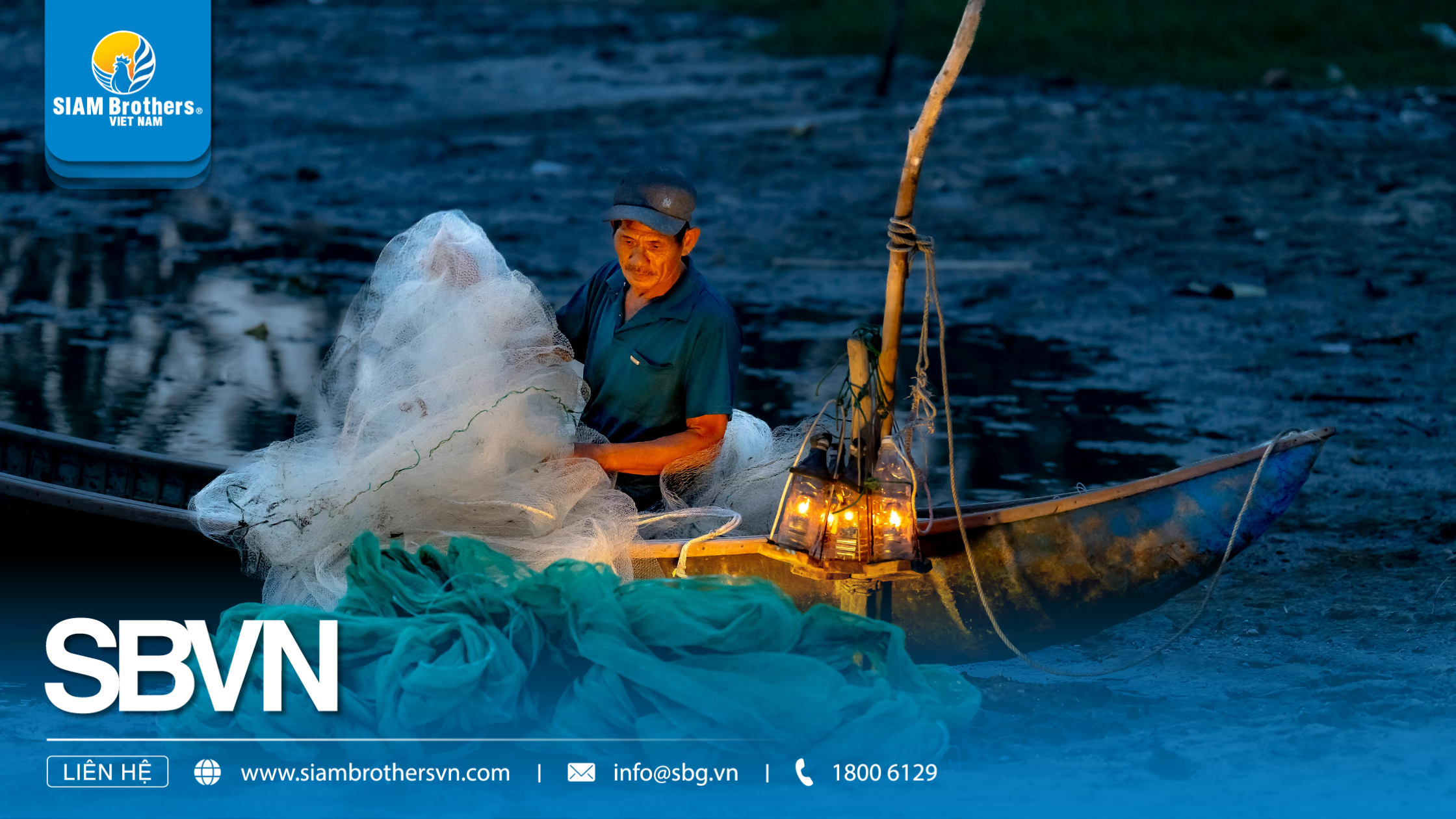
3.2 Advantages and Disadvantages of Each Type of Net Rope
PE Net Rope:
The most durable among the three, with excellent saltwater and abrasion resistance—ideal for offshore fishing nets. However, it is less flexible and requires proper knotting techniques for best performance.
Nylon Net Rope:
Highly flexible and elastic, it helps absorb shocks and prevents tearing when encountering large fish. On the downside, it loses strength when exposed to sunlight or prolonged seawater contact.
PP Net Rope:
Lightweight, buoyant, and affordable—suitable for small nets or calm waters. Yet, it offers lower durability compared to PE or Nylon, making it best for short-term or light-duty applications.
4. Which Type of Net Rope Should You Choose?
4.1 PE Net Rope – The Optimal Choice for Saltwater Environments
- Ideal for marine fisheries and offshore vessels.
- Resistant to salt corrosion, UV radiation, and friction.
- Perfect for purse seine nets, trawl nets, and deep-water anchoring systems.
4.2 Nylon Net Rope – Flexible and Shock-Absorbing Solution
- Recommended for gear requiring elasticity, such as gill nets or lift nets.
- Excellent load-bearing capacity, reducing tension and shock from strong currents.
- Soft surface prevents damage to the mesh fibers during prolonged contact.
However, it is not suitable for hot, sunny environments as it absorbs water and degrades faster.
4.3 PP Net Rope – A Cost-Effective Option for Freshwater Applications
- Best for aquaculture, ponds, and reservoirs.
- Lightweight, buoyant, and easy to handle during installation.
- Affordable, suitable for small-scale or budget-conscious operations.
However, its UV and abrasion resistance are lower than PE and Nylon, limiting long-term use.
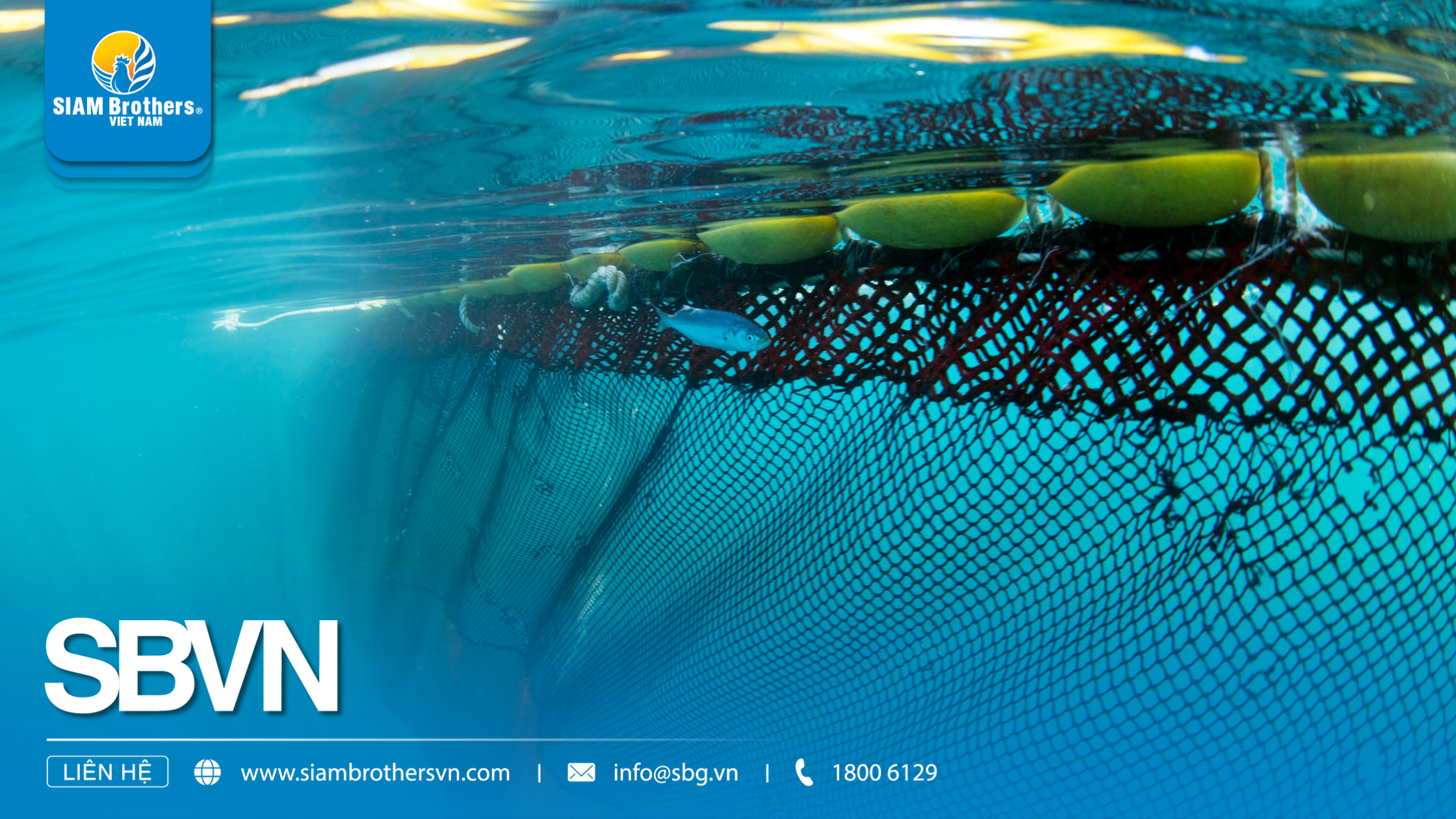
5. FAQ — Frequently Asked Questions About Net Ropes
5.1 Which type of net rope — PE, Nylon, or PP — is best for saltwater environments?
- For saltwater or offshore fishing areas, PE net rope is the optimal choice.
- PE offers excellent resistance to corrosion, UV rays, and friction, ensuring long-term durability even under harsh marine conditions.
5.2 Is Nylon net rope suitable for nearshore fishing?
- Yes. Nylon net ropes are highly elastic, helping absorb shocks and reduce damage when hauling nets in nearshore operations.
- However, Nylon tends to absorb water and may lose strength after prolonged exposure to sunlight, so proper storage is essential.
5.3 Is PP net rope durable?
- PP net rope is lightweight, buoyant, and affordable — ideal for aquaculture and freshwater environments.
- However, its UV and abrasion resistance are lower than PE and Nylon, so it is not recommended for saltwater applications.
5.4 How can I identify a high-quality net rope?
- A premium net rope should have a smooth, even surface with no frayed or broken fibers.
- When stretched, the rope should show light elasticity without deformation.
- Always choose products from trusted manufacturers such as SIAM Brothers Vietnam to ensure consistent strength and technical standards.
5.5 Does SIAM Brothers Vietnam offer custom-made net ropes?
- Yes. We provide custom PE, Nylon, and PP net ropes with adjustable sizes, colors, and tensile strengths to suit various fishing gear requirements.
- Customers can contact us directly at siambrothersvn.com for free consultation and fast quotations.
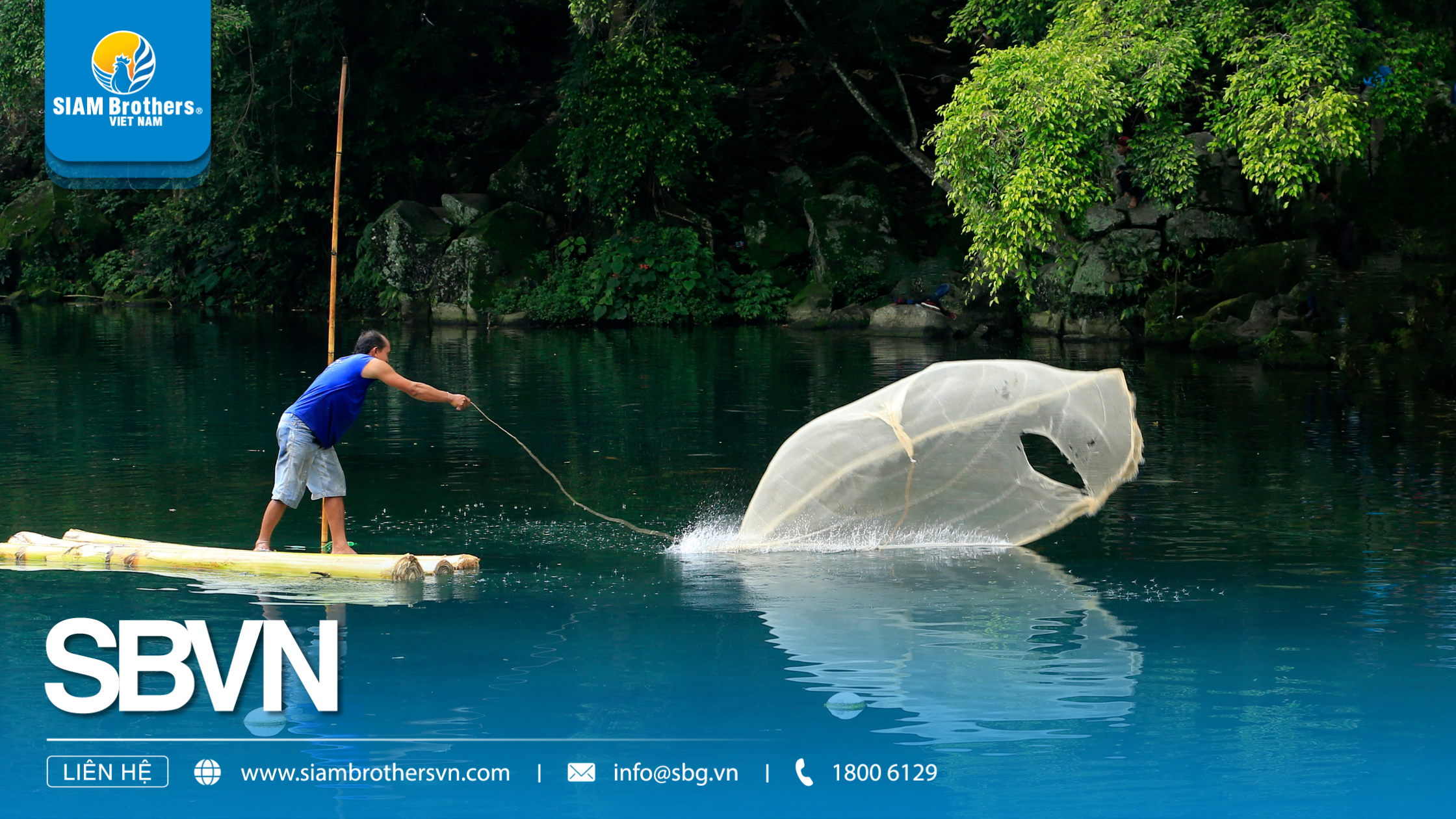
Choosing the right net rope not only ensures stable fishing operations but also improves long-term efficiency.
Each type — PE, Nylon, and PP — has its own strengths depending on the environment and usage needs.
Among them, PE net rope stands out for its superior durability, corrosion resistance, and tensile strength, making it ideal for offshore fisheries.
To guarantee the highest quality and longevity, always choose genuine products from SIAM Brothers Vietnam, the leading manufacturer and supplier of specialized ropes and net ropes.
Contact us today at siambrothersvn.com for expert consultation and a detailed quotation tailored to your fishing needs.
Source: SIAM Brothers Vietnam
Contact us:
► Address: 5th floor, VRG Building, 177 Hai Ba Trung Street., Xuan Hoa Ward, Ho Chi Minh City, Vietnam
► Hotline: 1800 6129
► Tel: (+84) 28 38 912 889
► Email: info@sbg.vn
► Follow us for more details at: Facebook - Zalo OA - Tiktok - Youtube - LinkedIn
Download SBVN ID app here:
► CHPlay
► Appstore






